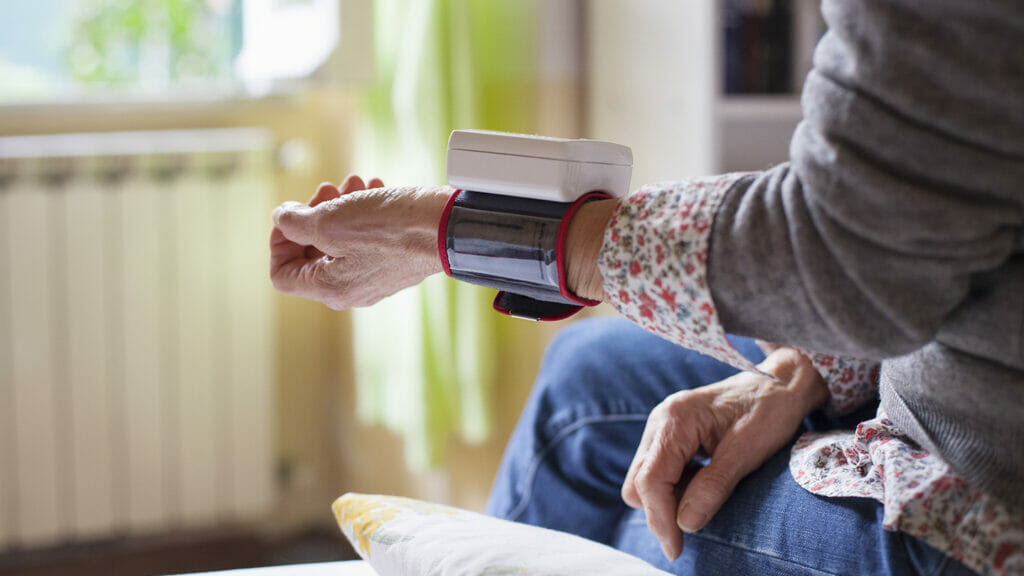

Remote monitoring technology can help long-term care communities keep residents safe and healthy, finds a pilot study of 30 nursing homes in England. Results showed that the use of bed-monitoring software reduced the need for emergency hospital admissions and doctor visits. It also shaved time spent on administrative work.
The pilot examined the use of technology from firm Docobo across 1,600 beds. With funding from England’s National Health Service, nursing home staff used tablet devices linked to blood pressure monitors, pulse oximeters and thermometers to regularly record residents’ vital signs. Those records were then given to clinicians who gave advice, monitored for gradual deterioration and resolved issues quickly. Results showed that the use of the technology led to an 18% reduction in hospital admissions, a 9% reduction in hospital readmissions and a 12% reduction in ambulance trips.
Staff answered questions for each resident to build a picture of overall health. If vital signs fell below initial benchmarks, an alert was sent. Then, staff immediately took action with responses that could all be done remotely, such as increasing observations or adjusting medications or doses.
In the US, skilled nursing operators are embracing similar technologies to improve resident care. For instance, researchers have created a new wearable patch that harnesses artificial intelligence and nanotechnology to monitor seniors’ health via biometrics.
Engineers at Monash University developed the ultra-thin patch, which is worn on the neck and monitors 11 human health signals. These include speech, neck movement and touch, plus breathing and heart rates. The patch uses a frequency and amplitude-based neural network called Deep Hybrid-Spectro, which automatically monitors biometrics. The patch had a 93% accuracy rate in monitoring these health signals, researchers found.
From the July/August 2023 Issue of McKnight's Long-Term Care News





